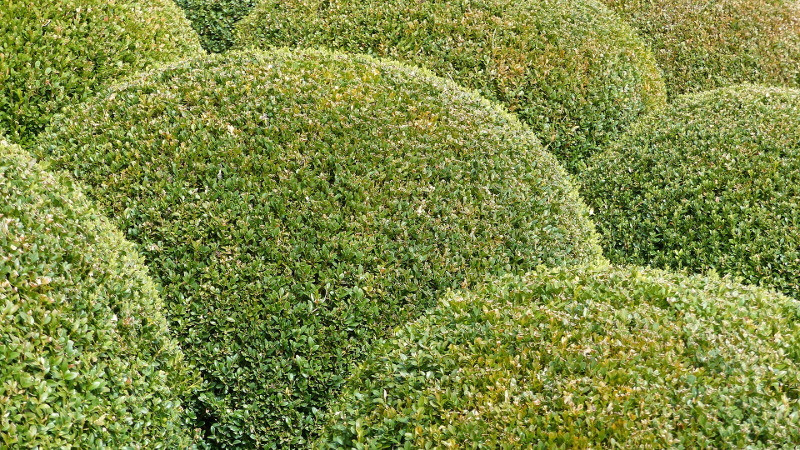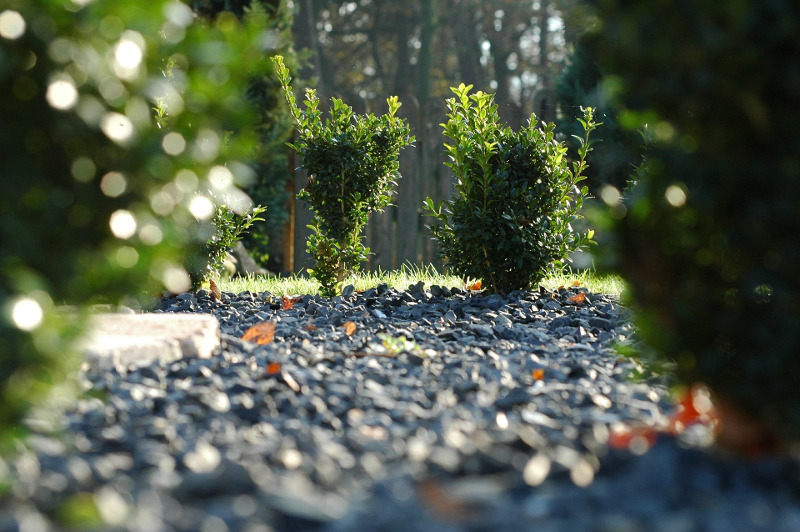You're found the perfect boxwood for your container or landscape and now it's time to plant. Where do you start?
When to Plant Boxwood
You can plant boxwood in fall, late winter or early spring. Fall often is best for planting to give the roots time to take hold before winter cold sets in. But as long as you avoid planting during the heat of summer or cold of winter, your boxwood should do fine in fall or spring.
Where to Plant Boxwood
Most boxwoods thrive in a mix of sun and shade, and need a little shelter from hot afternoon sun and cold winds. So, be aware of exposure for the spot you choose and make sure the variety you select most likely will thrive there. That includes making sure the soil in the area you choose drains well. Boxwoods do not do well in standing water or soggy soil. There are several ways you can use boxwood shrubs:
- As a year-round specimen (focal) plant in the ground or a container, next to your driveway or entryway, or to add a special shape or texture to a garden bed. One or two boxwoods draw the eye in.
- In a row or as a privacy break or path border, but with the plants spaced enough that you can see their edges or squeeze between them.
- As a hedge (for privacy, to separate areas of the garden, or simply for a green, smooth line). Once the plants are mature, they will grow together to look like a single plant.
- Against the foundation of your home to provide order, height or just year-round green to your home's curb appeal.

Best Soil For Boxwood
Soil that drains is key for healthy boxwoods. The shrubs can adapt to most other soil conditions such as pH (they prefer pH of about 6.8 to 7.5).
Steps For Planting Boxwood
- Dig a hole as deep as the root ball (you can use the container it comes in as a guide) and twice as wide as the root ball.
- Carefully remove the shrub from its container, gently loosen its roots, and place it in the hole so that you can see at least 2 inches of the root ball above ground level.
- Boxwoods like to be planted high, so be sure to check placement before filling your hole.
- Avoid pushing soil up against the shrub's trunk.
- Water your new boxwood deeply right after planting.
- Adding 1 inch of organic mulch such as pine bark or needles out to drip lines helps keep soil moist and helps prevent some diseases. Don't pile mulch against the trunk.
Spacing Boxwood Shrubs
The first clue to spacing your boxwood plants – in relation to one another or structures and other plants – is to know the mature size for your variety. Most, even dwarf varieties, need about 2 to 3 feet of space between holes for even spacing, but it depends on the eventual effect you want.

It might be tempting to crowd your plants for instant hedge effect or appearance; but be patient. Before long, the plants will grow and prune into a lovely hedge. For a tight hedge effect, place your plants half as far from one another as the mature plant size.
So, your Wintergreen boxwoods grow to 3 to 5 feet in width, for an average of 4 feet. Place the plants 2 feet apart. Those dwarf varieties that should be 2 to 3 feet apart for a grouping or row of individual plants should be squeezed to more like 15 or 18 inches apart for a low hedge.
Use a tape measure and string or spray paint to mark the line of your hedge. Once you've marked a line or design, set the potted boxwoods out evenly at the distance you desire based on the plant's eventual width.
The best way to measure is from the center of each plant. You can gently push down and twist each container to mark where to dig, then move the plants aside until the holes are ready.
 |
Author Teresa Odle - Published 8-28-2019 |
